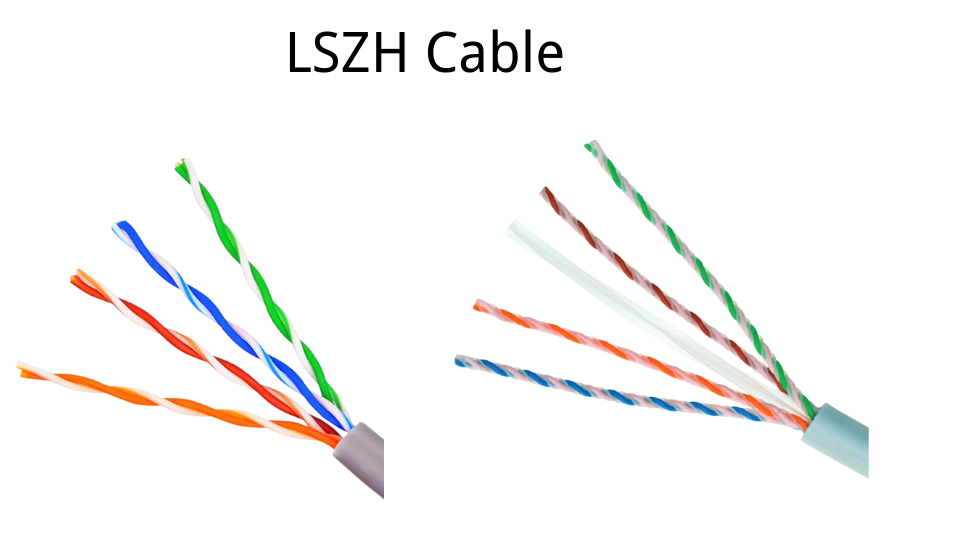Problem: Cable fires can release toxic fumes, jeopardizing lives and property. Agitation: Standard cables often produce thick, black smoke and halogen gases when burning. Solution: LSZH cables are designed to minimize these dangers, offering a safer alternative for critical environments.
LSZH cables are specialized electrical cables designed to emit minimal smoke and no toxic halogens when exposed to fire. Instead of burning with dense, hazardous fumes, they char, significantly reducing the risk of suffocation and chemical exposure during a fire incident. This makes them crucial for enclosed or highly populated areas.
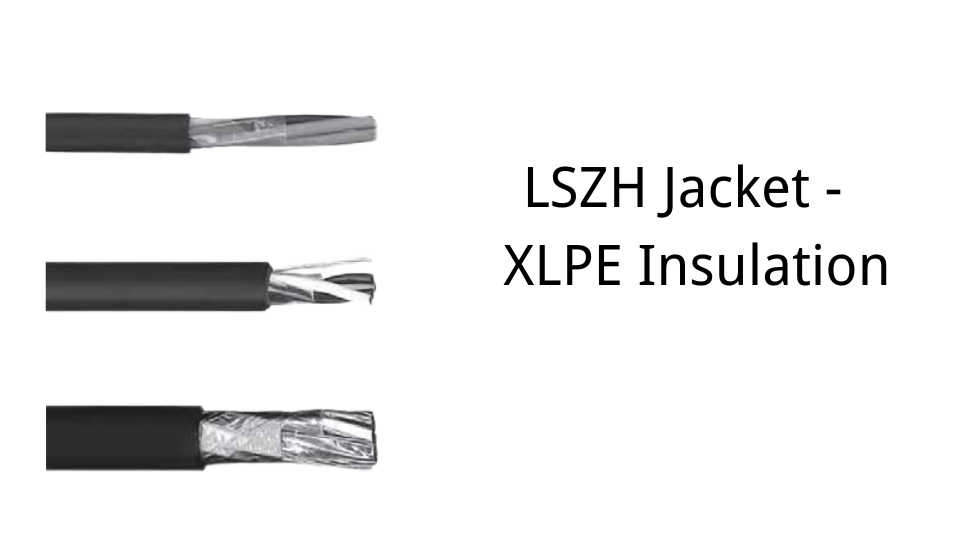
Choosing LSZH[1] is essentially buying critical "time insurance[2]" for unpredictable disasters. When the budget allows, investing in a high-quality LSZH system for densely populated areas or critical facilities is a responsible and wise engineering choice.
What is Low Smoke Zero Halogen Definition?
Problem: Imagine a fire in a crowded building, and the smoke is so thick and toxic you can’t see or breathe. Agitation: Traditional cable insulation can turn a bad situation into a catastrophe by releasing dangerous compounds. Solution: Low Smoke Zero Halogen (LSZH) addresses this by providing a safer alternative during fire incidents.
Low Smoke Zero Halogen (LSZH) refers to a material compound used in cable jackets that emits very little smoke and no toxic halogen gases when burned. This property is crucial for enhancing safety in fire situations by improving visibility for evacuation and reducing harm from caustic fumes.
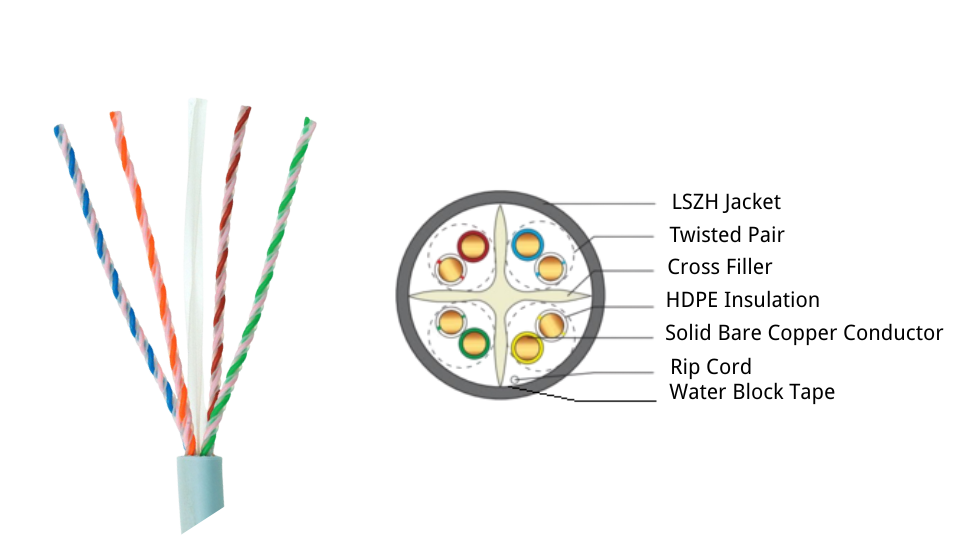
As I learned more about cable manufacturing, I realized the profound impact material science has on safety. LSZH materials[3] are a testament to this. They are formulated without elements like chlorine, fluorine, bromine, or iodine, which are common in many PVC (polyvinyl chloride) or FEP (fluorinated ethylene propylene) cable jackets. When cables with these halogens burn, they release dense, corrosive, and toxic smoke. This smoke can quickly incapacitate people in enclosed spaces, corrode sensitive electronic equipment, and obscure escape routes. On the other hand, LSZH materials are designed to char, or carbonize, when exposed to fire, rather than combusting with high smoke output. This charring process significantly reduces the amount of smoke produced, keeping visibility clearer, and prevents the creation of harmful acid gases. For example, in a data center or a subway tunnel, the difference between a PVC cable[4] and an LSZH cable during a fire could literally be the difference between life and death, or between minor damage and total system destruction. When selecting cables, it is essential to communicate with the supplier about the specific application environment, such as temperature, humidity, chemical exposure, and mechanical stress. Request detailed product data sheets and third-party certification test reports to fully understand the advantages and disadvantages. Strict factory inspection or sampling inspection may also be required based on the specific application.
What are the Types of Cable Jacket Materials?
Problem: The outer layer of a cable seems simple, but its material choice has huge implications for safety and performance. Agitation: Picking the wrong jacket material can lead to quick degradation, poor fire performance, or inadequate protection. Solution: Understanding different cable jacket materials is key to ensuring your cables meet specific environmental and safety requirements.
Cable jacket materials vary widely, each offering distinct properties that make them suitable for different applications. Common types include PVC (Polyvinyl Chloride) for general use, PE (Polyethylene) for outdoor and communication cables, FEP (Fluorinated Ethylene Propylene) for high-temperature and plenum applications, and LSZH (Low Smoke Zero Halogen) for fire safety-critical environments.
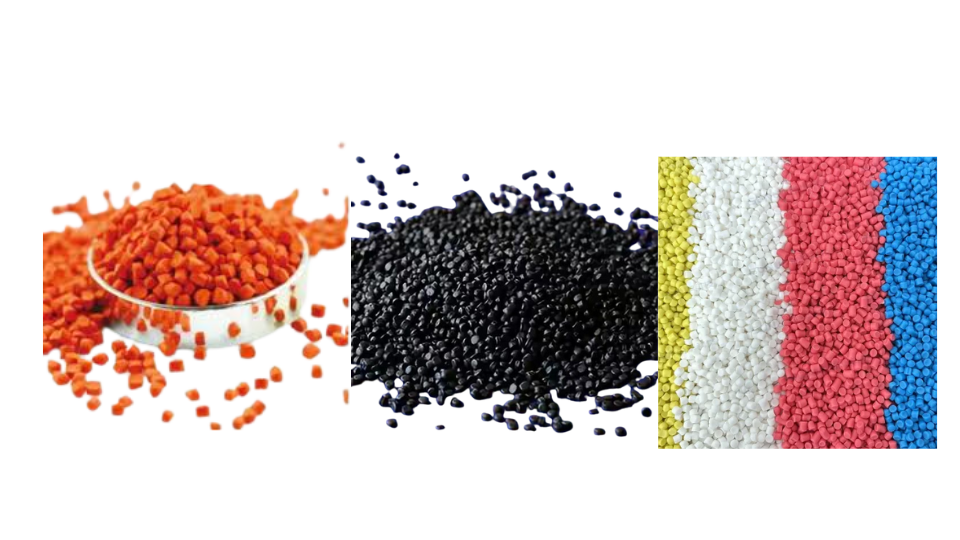
Throughout my career, I’ve seen countless projects where the cable jacket material was an afterthought, only to cause problems later. It’s a critical decision. Here’s a breakdown of some common materials I often encounter:
| Material Type | Characteristics | Common Applications | Fire Performance |
|---|---|---|---|
| PVC | Flexible, cost-effective, good abrasion resistance. | General-purpose cables, power cords, indoor installations. | Burns, produces heavy black smoke and toxic, corrosive halogen gases (HCl). |
| PE | Excellent electrical properties, durable, good moisture resistance, UV stable. | Outdoor cables, direct burial, communication lines (e.g., Cat5e/6). | Burns, can drip, produces dense smoke; not typically fire-retardant unless specially formulated. |
| FEP | High temperature resistance, excellent chemical resistance, low friction. | Plenum-rated cables, harsh industrial environments, high-performance data cables. | Excellent fire resistance, low smoke, but can release toxic fluorinated compounds at extreme temperatures. |
| LSZH | Low smoke emission, zero halogen gas release when burned. | Public buildings, tunnels, data centers, ships, aircraft. | Chars instead of burning, minimal smoke, no toxic halogens, crucial for life safety and equipment protection. |
| TPU (Thermoplastic Polyurethane) | Very flexible, excellent abrasion and oil resistance, good for dynamic applications. | Robotic cables, industrial machinery, medical devices, outdoor use. | Varies by formulation; generally good tear resistance, some formulations offer flame retardation. |
Each material has its trade-offs. For instance, while PVC is cheap and versatile, its fire performance[5] is a major liability in enclosed spaces. PE is great for outdoor use, but not ideal indoors without special fire-retardant additives. FEP excels in demanding environments but is more expensive. LSZH offers superior safety in fire situations, making it indispensable for specific applications. My role as a procurement expert often involves balancing performance, cost, and safety standards. Always ensure you are requesting detailed product data sheets and third-party certifications to confirm stated properties, especially for fire ratings.
Is the LSZH Cable Fire Retardant?
Problem: Many believe "low smoke zero halogen" automatically means "fireproof." Agitation: This is a dangerous misconception; most LSZH materials are not inherently fireproof. Solution: Understanding what fire retardancy means for LSZH cables is crucial for proper cable selection and safety.
While LSZH cables are designed to limit smoke and toxic gas emissions during a fire, they are not inherently fireproof. They are typically fire-retardant, meaning they resist ignition and slow flame propagation when exposed to a fire source, but they will eventually burn. The key benefit is the reduced harm when they do.
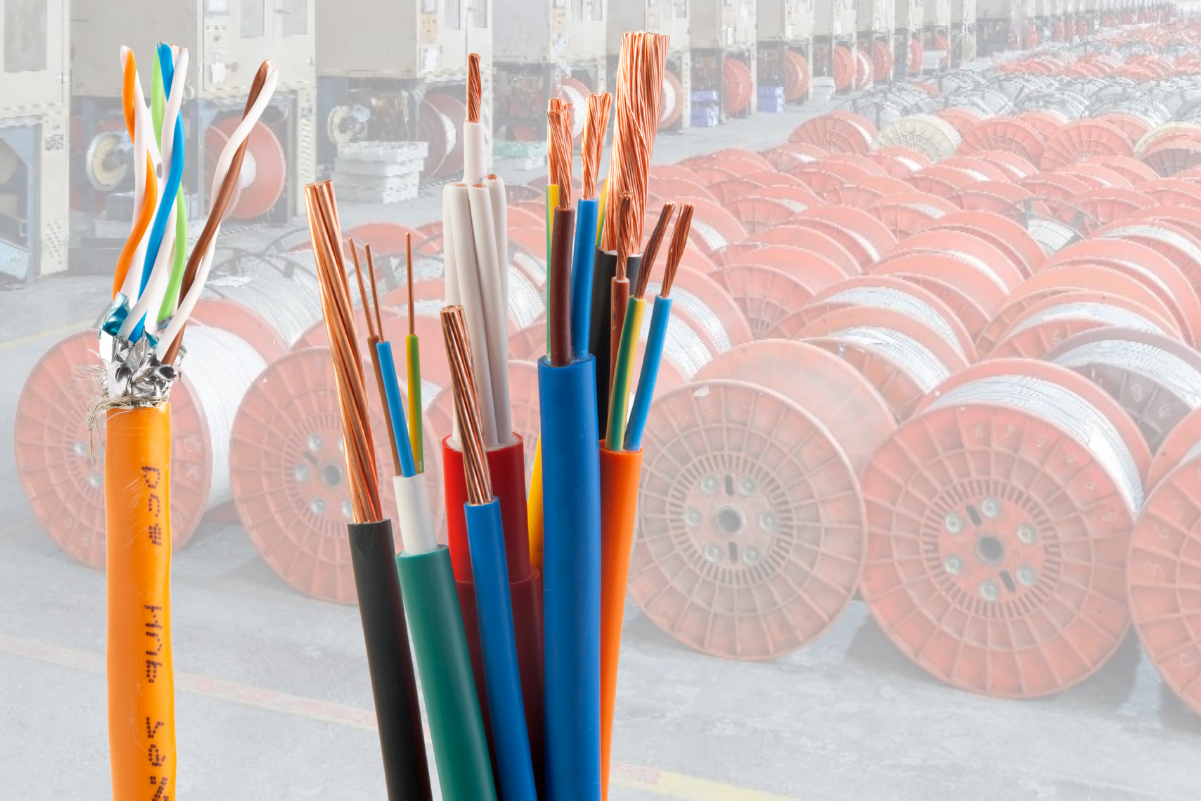
This is a common point of confusion I address with engineering teams. "Fire retardant" and "fire resistant[6]" are distinct terms, and it’s vital not to conflate them. Fire retardant means the cable resists ignition and slows the spread of flames. Most LSZH cables fall into this category. They are designed to self-extinguish once the fire source is removed, or at least to burn very slowly. This provides crucial time for evacuation and for firefighters to respond. However, "fire resistant" cables are designed to maintain circuit integrity and continue operating for a specified period during a fire. These typically have additional layers, like mica tapes, that protect the conductors at high temperatures. While some specialized LSZH cables can also be fire-resistant, it’s not a default property of all LSZH types. When sourcing, I always check for specific fire performance standards like IEC 60332 for flame propagation (how much the flame spreads), IEC 61034 for smoke density (how much smoke is produced), and IEC 60754 for halogen gas emission (how much toxic gas is released). For critical circuits that must remain operational during a fire, like emergency lighting or alarm systems, you need a cable that is certified as fire resistant, not just fire retardant[7]. Always ensure the supplier can provide the necessary third-party test reports to back up any claims about fire performance.
LSZH Cable: Is It The Right Cable for Your Next Project?
Problem: Selecting the right cable for a project can be overwhelming, with numerous technical specifications to consider. Agitation: Choosing the wrong cable can lead to safety hazards, regulatory non-compliance, and costly rework. Solution: Carefully evaluating LSZH cables against your project’s specific needs will help you make an informed decision.
Determining if LSZH cable is right for your project depends on several critical factors, primarily revolving around safety, regulatory requirements, and the specific environment. Projects in enclosed public spaces, data centers, tunnels, or buildings with high occupancy or sensitive electronic equipment are prime candidates for LSZH due to its superior fire safety properties.

When I consult on new projects, the "right cable" question always leads to a deeper dive into the application. Deciding on LSZH isn’t just about ticking a box; it’s about a risk assessment. Here’s how I typically break it down:
| Factor | Consideration for LSZH |
|---|---|
| Occupancy/Evacuation | High Priority for LSZH: If the space is densely populated (e.g., hospitals, schools, theaters, office buildings, shopping malls) or if evacuation is difficult (e.g., subway systems, tunnels, high-rise buildings), LSZH is almost always the right choice. The reduced smoke and non-toxic fumes significantly improve visibility for escape and minimize harm from inhalation, buying precious time. |
| Sensitive Equipment | High Priority for LSZH: Data centers, control rooms, telecommunication exchanges, or industrial facilities with highly sensitive electronic equipment benefit immensely from LSZH. The corrosive acid gases released by traditional PVC cables during a fire can lead to widespread and irreparable damage to electronics, even far from the fire source. LSZH prevents this by eliminating halogen acids. |
| Regulatory Compliance | Mandatory for LSZH: Many regions and specific building codes now mandate LSZH cables for certain applications, especially in public access areas, escape routes, and confined spaces. Always check local and national fire safety regulations (e.g., NFPA, IEC standards) relevant to your project’s location and type. Non-compliance can result in hefty fines, project delays, or even legal liabilities. |
| Budget & Cost | Consideration: LSZH cables typically have a higher upfront cost than PVC alternatives due to the specialized materials and manufacturing processes. However, this increased cost is often offset by the long-term benefits in terms of safety, reduced property damage, and avoiding potential legal liabilities in case of a fire. It’s often a case of "penny wise, pound foolish" to opt for cheaper, less safe cables in critical applications. |
| Installation Environment | Consideration: While LSZH is excellent for fire safety, it’s also important to consider other environmental factors. Is the cable exposed to extreme temperatures, UV light, chemicals, or mechanical stress? While many LSZH formulations are robust, some may have slightly different mechanical properties (e.g., flexibility, abrasion resistance) compared to traditional PVC. Always verify that the LSZH cable’s overall performance characteristics meet all demands of the installation environment. For example, if it’s for an industrial application with constant movement, its flex life must be considered. |
Ultimately, for projects where human safety, continuity of operations, and protection of valuable assets are paramount, LSZH cables are not just an option but a responsible and often mandatory choice. It’s an investment in peace of mind and resilience against unforeseen events.
Conclusion
LSZH cables are vital for fire safety, reducing smoke and toxic gas emissions. They are ideal for high-occupancy areas and sensitive equipment spaces, offering crucial "time insurance" in emergencies.
[1]: Explore this link to understand how LSZH can enhance safety and reliability in engineering projects.
[2]: Learn about time insurance and its role in disaster preparedness and risk management.
[3]: Explore the advantages of LSZH materials, which enhance safety by reducing toxic smoke and improving visibility during fires.
[4]: Learn about the safety risks associated with PVC cables, especially in fire situations, and why LSZH is a safer alternative.
[5]: Understanding fire performance is crucial for safety and compliance in material selection, especially in enclosed spaces.
[6]: Exploring the standards for fire resistant cables ensures you choose the right products for critical applications, enhancing safety.
[7]: Understanding the distinction between fire retardant and fire resistant materials is crucial for safety and compliance in engineering.

